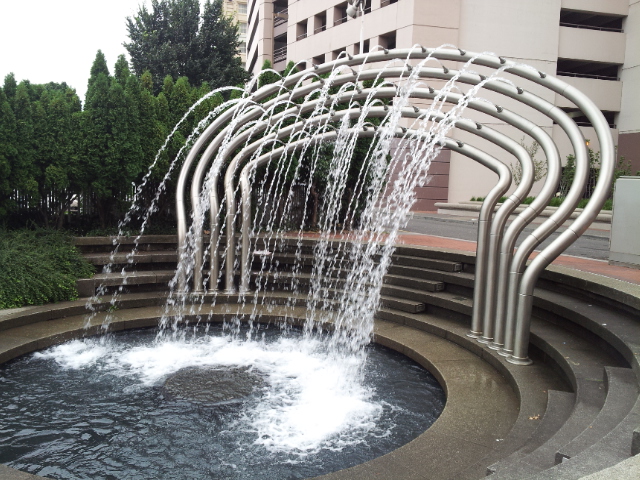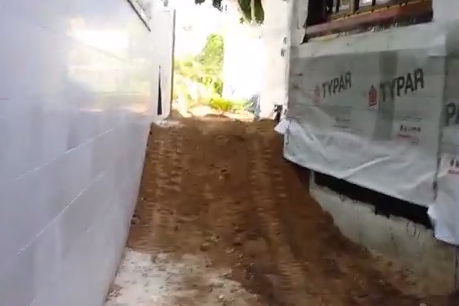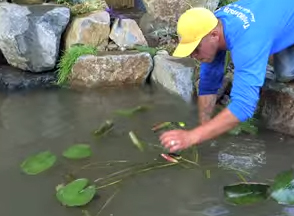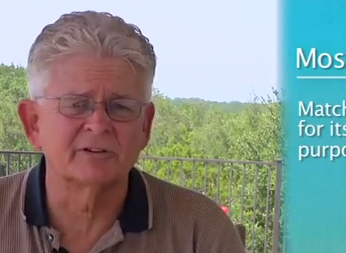ARTICLES
Advance Search
Aquatic Health
Aquatic Health, Fitness & Safety
Around the Internet
Aquatic Culture
Aquatic Technology
Artful Endeavors
Celebrity Corner
Life Aquatic
Must-See Watershapes
People with Cameras
Watershapes in the Headlines
Art/Architectural History
Book & Media Reviews
Commentaries, Interviews & Profiles
Concrete Science
Environment
Fountains
Geotechnical
Join the Dialogue
Landscape, Plants, Hardscape & Decks
Lighter Side
Ripples
Test Your Knowledge
The Aquatic Quiz
Other Waterfeatures (from birdbaths to lakes)
Outdoor Living, Fire Features, Amenities & Lighting
Plants
Ponds, Streams & Waterfalls
Pools & Spas
Professional Watershaping
Structures (Editor's Notes)
Travelogues & History
Water Chemistry
WaterShapes TV
WaterShapes World Blog
Web Links
Around the Internet
Aquatic Culture
Aquatic Technology
Artful Endeavors
Celebrity Corner
Life Aquatic
Must-See Watershapes
People with Cameras
Watershapes in the Headlines
Jacksonville Jaguars Build Swimming Pools in Stands
In my various trips near and far, I ve occasionally experienced fountains that function only sporadically. if you'll recall, for example, i wrote in december 2012 about ricardo legorreta's purple aqueduct los angeles'pershing square, which, i've been told, runs when the local water table permits it which is why had to visit square three times before witnessed operation.
I've also seen fountains that were installed with either official names or no names at all - but that are universally referred to by locals with other, generally less-respectful names. I wrote in June 2013 about the Inverted Fountain on the UCLA campus, for instance, mentioning that irreverent students (at least of my generation) called it the Perpetual Toilet because of the familiar way the water circled so voluminously into its drain.
Now I offer up a fountain that scores big in both of these odd categories: It's an unnamed fountain in Portland, Ore., that has what is often complained of as an overly sensitive wind sensor that shuts the water off completely at what seems the slightest provocation. It also has the distinction of looking a bit like the sprayer bar in a commercial convenience, so most people call it the Car Wash Fountain.
Made up of rows of curving metal tubes, the fountain was installed in its compact Portland park in 1977 with a design from the firm of Carter, Hull, Nishita, McCulley and Baxter. (Nishita had been an associate of Lawrence Halprin's, but separation from the great man evidently led him on a different stylistic path.) The spray jets apparently make pedestrians miserable when the wind blows (which it often does in Portland), so when the breeze reaches a scant two miles an hour, the water stops flowing. This low threshold makes it a bit too easy to find the Car Wash closed for business.
I have to say that I'm not terribly fond of this fountain - and it's only partially the result of having had the misfortune of stopping by to see it on a cold, blustery day. Basically, I don't think it's an attractive contribution to the cityscape; I'd also like to think it was incumbent on the designers to recognize the problems even a gentle breeze in this particular location would cause with their fountain's basic operation.
That doesn't mean the fountain isn't worth a visit: People who write about Portland's attractions look at it with obvious pride - and it's not just because they like referring to it as the Car Wash Fountain. Maybe it's just me?
Then as now, I look on the bright side: The Car Wash Fountain is within easy walking distance of a bunch of other fine Portland fountains, and it's hard to stay upset when you have about a mile to walk to the Keller and Lovejoy fountains - two of Halprin's masterpieces.
For a very brief video showing the fountain in action, click here.
It's been a while since I shared a video with you through WaterShapes.com, but it occurred to me (even after a good, long gap) that this one fit perfectly into the series we once offered on the subject of site access and the ways equipment and the products of demolition and construction can be moved from place to place under
With the 2014 Hurricane Season About to Begin, What's a Pool Homeowner to Do?!
It's with mixed emotions that I bring this long series of videos to a conclusion: It's been fun sharing what I know about all of the steps of the pond-installation process with you, and it's been gratifying to get comments from some of you along the way. But all good things must come to an end, and that's what happens with this video. One technical point before I
U.K. Public Pool Pioneers Special Lane for Men with Hairy Backs
I have a couple things to point out about the newsletter surrounding this blog: [ ] This edition includes the introductory text for - and a link to - the twenty-first and final video in Eric Triplett's amazing "PondCraft 101" series. Eric originally prepared these videos as a means of letting interested consumers know
It doesn't happen every time, but once in a while I'll speak with a prospective client who's done some homework and has reached a conclusion about which manufacturer's equipment should be used on his or her watershaping project.It's nice that he or she is engaged in the process to that fine a level, but as I mention in the video linked below, it really isn't an issue with which a homeowner needs to get involved because
Some fountains are great because they are aesthetically amazing; others are on the less-spectacular side but have great stories or commemorate worthy persons or events. Happily, still other fountains deliver the whole package: They are beautiful to behold and intricately woven into their local histories and cultures.
One watershape in that special third category is the Nicholas J. Melas Centennial Fountain in Chicago. It celebrates the lifetime achievements of its namesake, who, for 30 years from 1962 on, was a commissioner on the board of the Metropolitan Water Reclamation District of Chicago - a man doubtless worthy of the honor.
But what's cooler in my book is the Centennial part of the fountain's nomenclature: It was commissioned on the Chicago River in 1989 to celebrate the 100th anniversary of a government agency whose single greatest achievement was, around 1900, reversing the flow of the Chicago River: They turned it around to keep it from flowing into and polluting the city's Lake Michigan water supply.
Today this all sounds like ecological blasphemy, but before the water district accomplished this clever engineering feat, waterborne diseases including typhoid and cholera ravaged the population whenever the river ran high enough to flush its burden of pollution into the lake. As the historic summary linked below indicates, Chicago as we know it might not exist had this problem not been so thoughtfully addressed.
I love the fountain's rich backstory - and the way it looks, too. Designed by Lohan Associates of Chicago (now Lohan Anderson), the stacked, stepped style perfectly befits the Modernism that is so much a part of downtown Chicago's look and appeal. The composition also includes a water cannon that shoots an eight-story-high arc of water across the river - a spectacular display that (Chicago's famous winds permitting!) shoots on the hour for ten-minute stretches.
There's so much to see in Chicago - and so much of it has to do with water - that every watershaper should visit the city, probably more than once, in the course of a professional lifetime. Please do add this wonderful fountain to your itinerary the next time you go!
For a bit of Chicago River history, click here. For a brief video that shows the fountain and water cannon in action, click here.




















